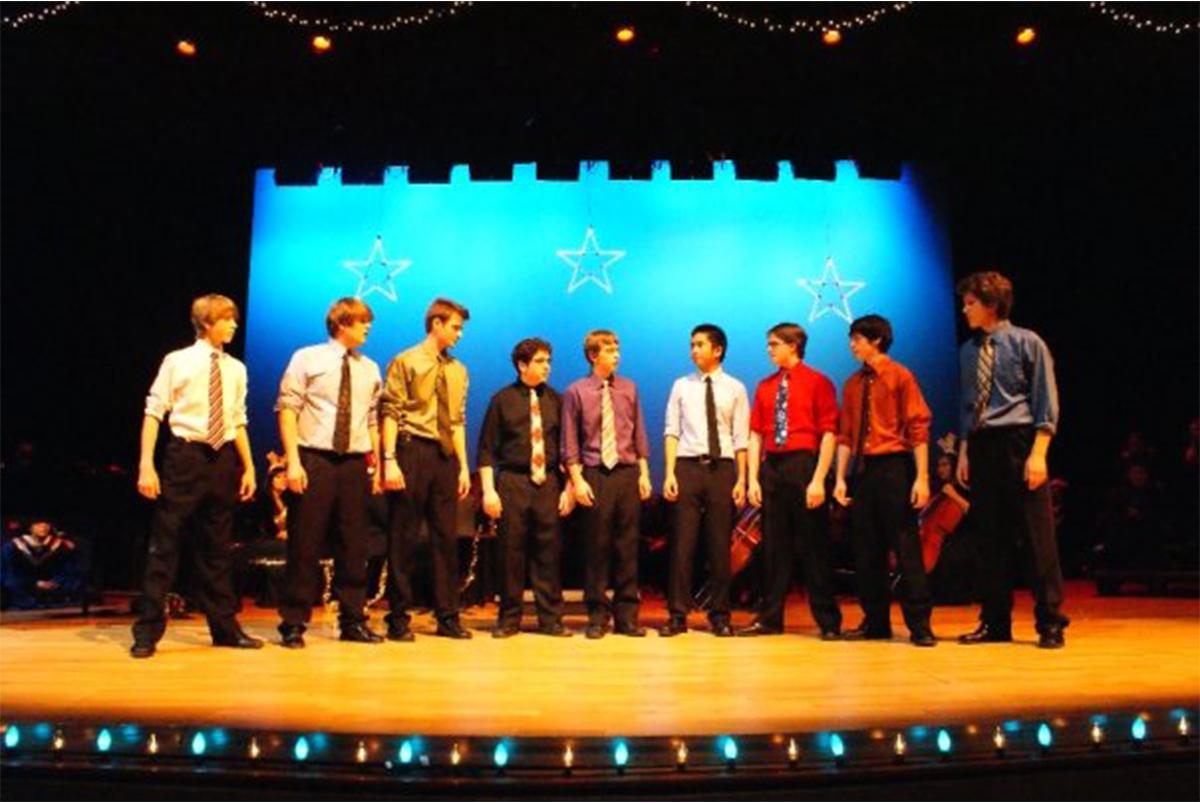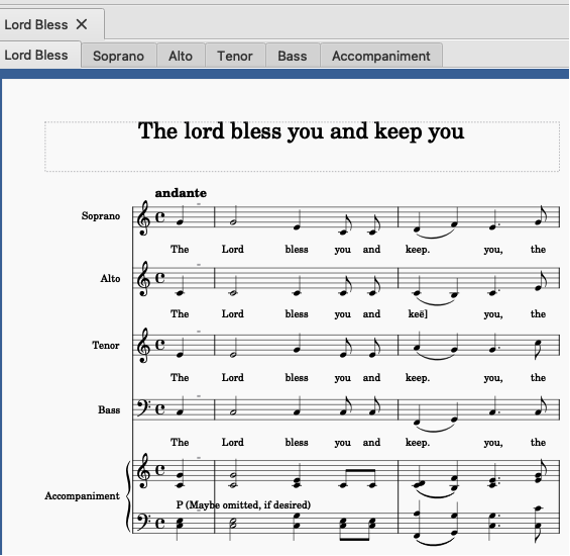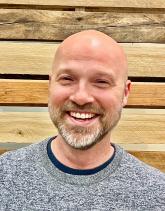
Soundtrap for Education for Small Ensembles
by Jeremy Little
Breaking up our large ensembles into smaller groups is one of my favorite strategies for enhancing students' critical thinking, problem-solving, and musical development. This approach is particularly effective when preparing for a Solo and Ensemble event. Even after 20 years of teaching choir and developing a conducive environment for small group work, I have discovered that Soundtrap for Education is a valuable tool that allows students to learn independently, rehearse and enhance their critical thinking skills. This project works with any type of ensemble, and is not limited to choirs.
Each ensemble is is matched by balance and ability level and has a designated “team leader.” I work with the team leaders to create weekly “lesson plans” which they do their best to teach. Initial small group rehearsals focus on rhythmic and melodic accuracy, with subsequent rehearsals progressing to phrasing, memorization, and group performance artistry.
Soundtrap for Education enables both my small and large ensembles to practice independently by performing and recording their individual parts on their Chromebooks.
- Students can break out and rehearse all parts simultaneously.
- By rehearsing two parts within the context of the larger group in the Soundtrap environment, they can obtain genuine, feedback generated by their peers.
During rehearsals, students can leverage the "accompaniment" feature in Soundtrap to enhance their practice sessions.
- By isolating a single vocal line and the accompaniment, they can scaffold their part-learning.: As they become more confident, students lower the volume or their part or mute it altogether, singing the line independently with the accompaniment.
- After practicing individually with Soundtrap's accompaniment, groups can participate in "clinics" with other ensembles, providing feedback and coaching their peers with strategies they have learned during their own rehearsals.
Ultimately, students record their vocal lines in Soundtrap to create a digital performance of their small ensemble piece. This performance is incorporated into their final grade. This project gives the students an introduction to using a Digital Audio Workstation for a real-world outcome: their own live performance. Inherents, students want to record their part accurately because they know this directly impacts their ability to perform the work live.
How
One important consideration for busy music educators: implementing this project requires a significant amount of preparation and setup time. This involves carefully selecting and digitizing scores, uploading them to Soundtrap, and creating and grading Soundtrap studios and student reflection Google Docs.
I do this project once each school year, typically beginning in January and concluding in early March. I incorporate songs from previous years, gradually expading my digital repertoire portfoliofor this project. While it may take a few years to iron out any challenges and establish an efficient system for this type of small ensemble work, the investment is worthwhile and the work becomes progressively more manageable.
Laying the Groundwork
Careful consideration must be employed when selecting repertoire for each group. I typically opt for accompanied pieces with straightforward part-writing when selecting repertoire for my beginning ensembles. For more advanced groups, a cappella and pieces with more rubato may be more appropriate. Following the selection of each piece, I convert it into a .xml format.
Using Newzik Education
A simple method to convert a score PDF into .xml format is to upload the .pdf file to Newzik Education and then convert it using Newzik’s LiveScore feature. Through Newzik’s optical character reader (OCR), the LiveScore can be converted to, and downloaded as, an .xml file.
Using Notation Software
The next step is to open the .xml file in a notation program such as Flat for Education, Noteflight Learn, or Musescore. It may be necessary to make some adjustments, such as manipulating the tempo, correcting any pitch or rhythm errors that weren’t accurately captured by the OCR, and generally refinethe score the make it well-formatted for students. Careful attention is necessary at this stage to ensure that all notes, rhythms, and tempi are precise.
Afterward, the individual vocal lines must be created in the notation software by using a Parts function. This creates separate lines the can be labelled andexported as .wav files via an Export function. This renders an exact audio version of each vocal line, along withthe accompaniment. NB: The quality and timbre of the audio files are wholly dependent on the instrument type and sound library (patch) selected for each part. If you find the ‘voice’ sound unpleasant, consider using piano or woodwind instruments instead. Flute, clarinet, tenor saxophone and bassoon often more pleasing mixes in a four-part texture. Experimentation can help you to find a combination you prefer.

Using Soundtrap for Education
Lastly, I set up a new project “Studio” in Soundtrap, import each individual vocal and accompaniment line (in .wav format), and invite students to join the project. This year, we had eight different “studios” for eight small groups at my school.
Note: I have an amazing collaborative accompanist who assists with the .pdf to .xml conversions. If available, capable students can assist with the process. However, even without such support, I would still undertake this project by either utilizing Newzik for Education to convert scores to .xml or beginning with free public domain scores available on the internet. Below are some popular sources for free public domain choral scores in .xml and other easily convertible formats:
Weekly Rehearsals
In preparation for the annual Solo and Ensemble event, our small groups rehearse twice a week for five weeks. I establish a rotation schedule to meet with and accompany each group, but due to time constraints, I am unable to work with all six groups each day. With Soundtrap for Education, each group can rehearse productively on a daily basis even without my direct assistance. As this project takes place midway through the school year, students can apply effective choral rehearsal techniques they learned during full ensemble rehearsals.
Additional benefits include:
- Since Soundtrap provides an accurate model, students learn to identify errors in their performance, both in terms of pitch and rhythm.
- Students learn how to provide and receive constructive feedback.
- Less experience musicians learn to rely on stronger musicians during rehearsals, and learn through observation how to improve.
- Students engage in self-assessment by recording their ensemble using the “Voice Memos” app on their phones. This allows them to evaluate elements of their performance, such as balance, blend, vowel formation, etc. in addition to rhythmic and pitch accuracy.
- Students make self-guided, individual progress by using Soundtrap as a rehearsal scaffold. They frequently refer to their individual parts when unsure and use the accompaniment track to prepare for live performances.
- Students challenge themselves by singing their vocal line against all the other parts. To do so, they mute their own part in Soundtrap, creating a ‘music minus one’ scenario, which presents a much more challenging task.
Why
At the conclusion of each rehearsal week, students write brief reflections on their progress. I intermittently attend rehearsals to provide encouragement, while meeting Team Leaders behind the scenes to resolve any issues. I give As students are responsible for their own progress, there is a genuine and palpable sense of both ownership and consequence. By listening to the progress of other groups, student become more committed and develop a sense of urgency to meet the standards established by their peers.
I am dedicated to this project because of the tremendous individual student growth I see when students practice and rehearse independently. Despite the extensive planning and preparation required, there is always the possibility that a group may misuse their rehearsal time and have a poor performance. However, based on my my experience, students tend to exceed their own expectations and rise to the occasion . By utilizing Soundtrap for Education, Newzik Education, and Musescore, I have established miniature laboratories in which students experiment, rehearse, learn, and grow together. The effort required for preparation and the inherent risks of providing students with such autonomy and ownership are always worthwhile in light of the benefits.
